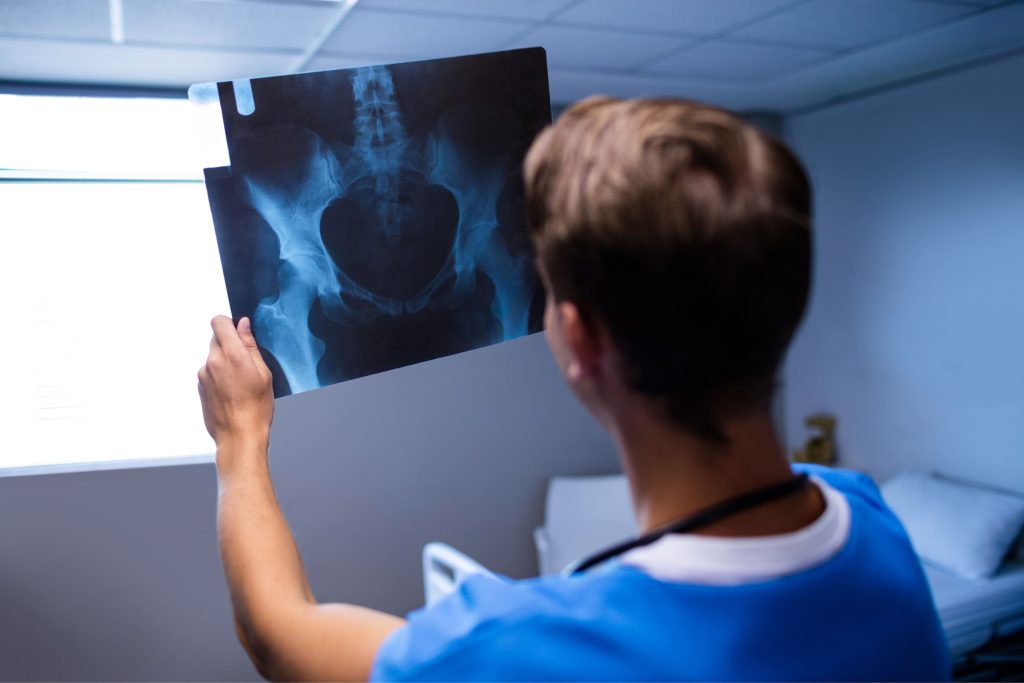Treatment Options for Hip Fracture in the Elderly
Hip fractures in the elderly constitute a significant health concern, impacting the people affected. These fractures, often resulting from falls or direct impacts, lead to substantial morbidity and increased mortality rates.
The vulnerability of the elderly to hip fractures is attributed to age-related changes such as decreased bone density, balance issues, and chronic health conditions, which escalate the risk of falls and subsequent injuries.
Risks of Hip Fractures Among the Elderly
The risk factors for hip fractures among the elderly are multifactorial, encompassing both intrinsic and extrinsic elements:
- Osteoporosis: A leading intrinsic cause, where decreased bone density increases susceptibility to fractures.
- Age-related Decline: Diminished balance and muscle strength heighten the risk of falls.
- Chronic Health Conditions: Diseases such as arthritis and neurological conditions can impair mobility and balance, increasing the risk of falls.
- Environmental Hazards: Slippery floors, poor lighting, and obstacles that can lead to falls.
- Medications: Certain medications, such as sedatives and antihypertensives, may increase the risk of falls by causing dizziness or orthostatic hypotension.
- Lifestyle Choices: Lack of physical activity can weaken bones and muscles, further contributing to a higher risk of falls.
Understanding these risks is crucial for developing effective prevention and management strategies for hip fractures in the elderly.
Diagnosis Methods
Diagnosing hip fractures in the elderly involves a combination of clinical assessment and imaging techniques to accurately identify the presence and type of fracture. The process typically includes:
- Clinical Evaluation: A thorough medical history and physical examination are conducted to assess symptoms, such as pain in the hip or groin area, inability to bear weight, and reduced mobility. The examination also looks for any signs of bruising, swelling, or deformity around the hip area.
- Imaging Techniques:
- X-rays: The primary tool for confirming a hip fracture, revealing the location and extent of the fracture.
- Magnetic Resonance Imaging (MRI): Used when X-rays are inconclusive, as MRI can detect hairline fractures and soft tissue injuries that X-rays may overlook.
- Computed Tomography (CT) Scan: Offers more detailed images than X-rays, particularly useful for complex fractures.
Early and accurate diagnosis is crucial for determining the most appropriate treatment plan to improve outcomes and reduce the risk of complications.
Treatment Options
The treatment of hip fractures in the elderly is critical for restoring mobility and minimising the risk of complications. Treatment options vary based on the type of fracture, the patient’s overall health, and mobility goals. They include:
Surgical Options
- Internal Fixation: Metal screws, plates, or rods are used to hold the bone fragments in place until they heal. Suitable for certain types of fractures where bones can be aligned correctly.
- Hip Replacement Surgery: In cases where the fracture involves the head of the femur or when the hip joint is damaged, a partial or total hip replacement might be recommended. This involves replacing the damaged parts of the hip with artificial components.
Non-surgical Options
- Pain Management: Effective pain control using medications is vital for patients who might not be candidates for surgery due to severe health issues.
- Physical Therapy: Tailored exercises and rehabilitation programs are essential to improve mobility and strength after a hip fracture, regardless of whether surgery is performed.
The choice between surgical and non-surgical treatments depends on several factors, including the patient’s medical condition, the nature of the fracture, and the potential for recovery. A multidisciplinary team approach is often employed to ensure the best possible outcomes.
Postoperative Care and Rehabilitation
Postoperative care and rehabilitation are pivotal for the recovery of elderly patients following hip fracture surgery. This phase focuses on:
- Pain Management: Effective pain relief strategies are crucial to facilitate active participation in rehabilitation.
- Physical Therapy: Begins soon after surgery, aiming to restore mobility, strength, and balance. Tailored exercises help patients regain function and independence.
- Preventing Complications: Measures are taken to prevent post-surgical complications such as infections, blood clots, and pressure ulcers. This includes the use of antibiotics, anticoagulants, and regular repositioning of the patient.
- Nutritional Support: Adequate nutrition plays a vital role in healing and recovery. Nutritional assessments and support, including vitamin D and calcium supplementation, may be recommended to enhance bone health.
Rehabilitation is a multidisciplinary effort, often involving physiotherapists, occupational therapists, nurses, and dietitians, to support the patient through recovery and to regain as much independence as possible.
Challenges and Considerations in Treatment
Treating hip fractures in the elderly involves navigating various challenges and considerations to ensure the best possible outcomes. Key aspects include:
- Comorbidities: Many elderly patients have multiple health conditions that can complicate treatment and recovery. Managing these comorbidities effectively is crucial for a successful recovery.
- Bone Quality: Osteoporosis or poor bone quality can affect surgical outcomes and the choice of treatment method. Specialised surgical techniques and materials may be required.
- Rehabilitation Potential: Assessing a patient’s potential for rehabilitation is essential for setting realistic recovery goals. This includes evaluating their pre-fracture mobility and overall health status.
Addressing these challenges requires a personalised approach tailored to each patient’s unique health status and needs.
Conclusion
Hip fractures in the elderly represent a major challenge with significant impacts on mobility, independence, and overall quality of life. Effective management of hip fractures requires a comprehensive approach that includes accurate diagnosis, appropriate treatment options, and a focus on postoperative care and rehabilitation.
As the elderly population continues to grow, the proactive management and prevention of hip fractures will remain essential in promoting the health, well-being, and independence of older adults.




